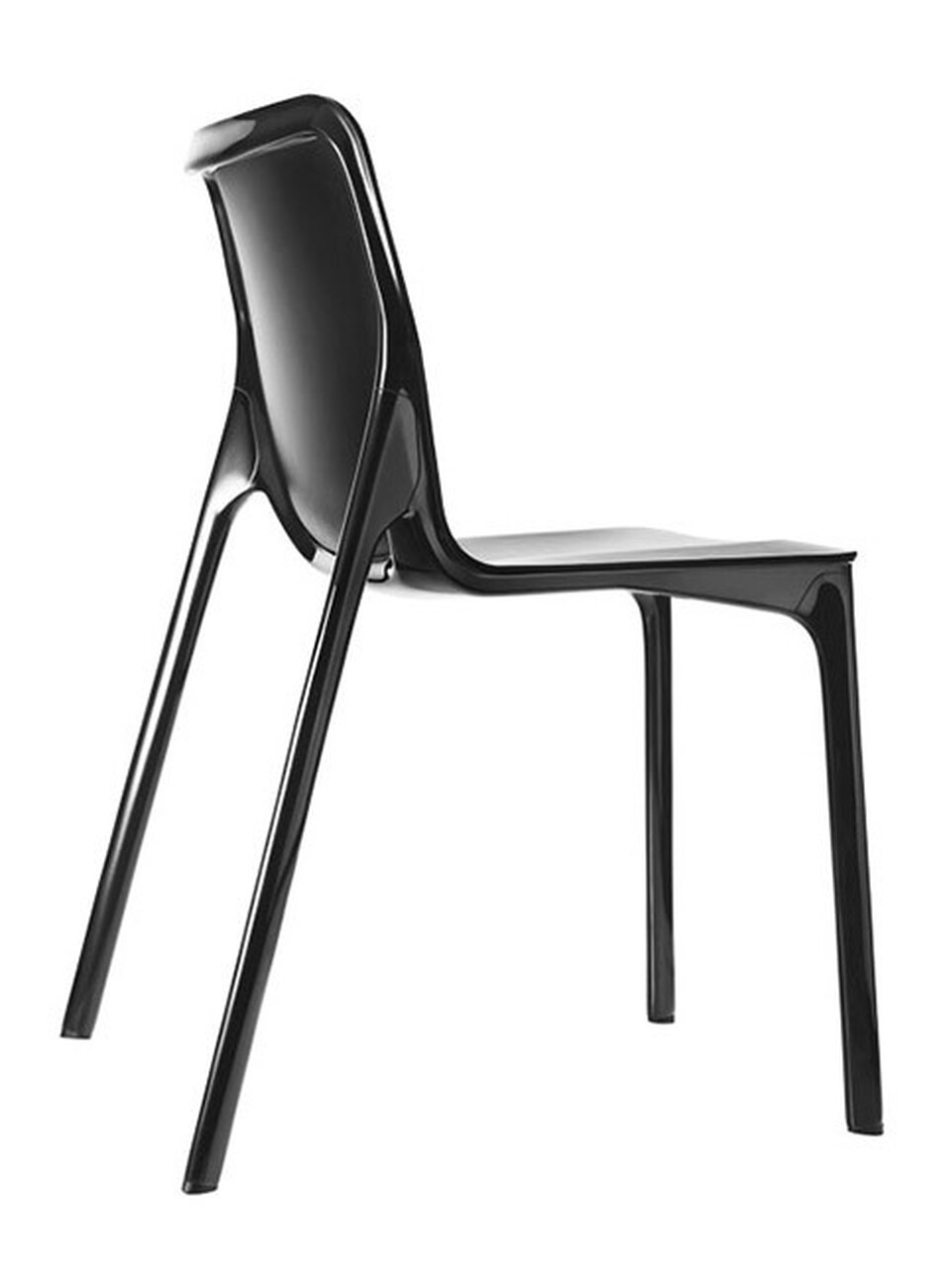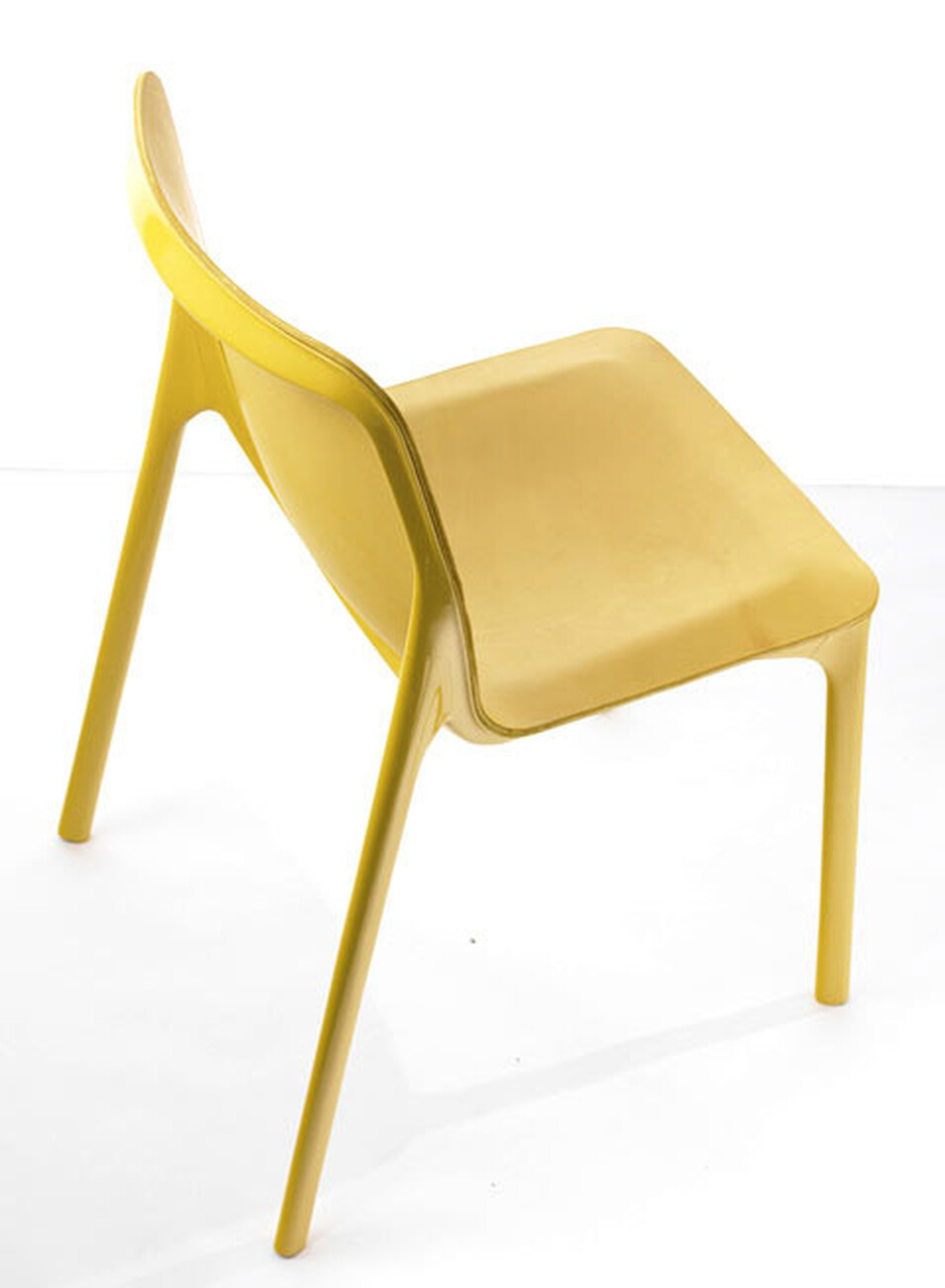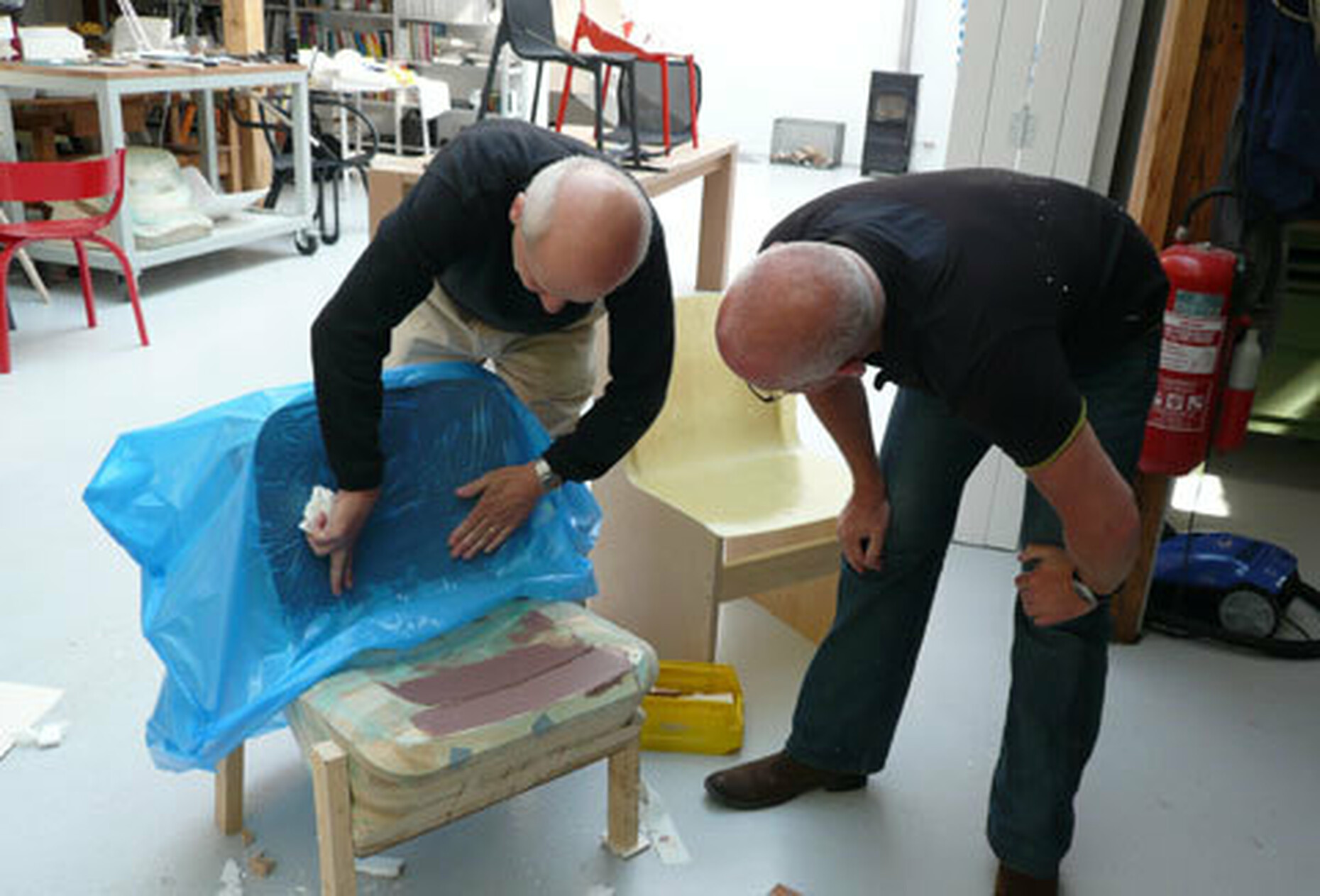A cowboy has to be able to sit on it without looking stupid
Cowboys sit firmly in the saddle. And the sturdy leather they sit on as they ride across the prairie has its own patina. Yet times have changed for cowboys as well. The saddle on which nowadays they hasten through the vast expanses of the globalized world has to prove its worth at the business rodeo or the meeting with the chiefs of the competitors. Bu what does it look like, this new seat for all those for whom living and working have become closely intertwined? What appeal, and consequently what technological sophistication and sensual qualities does a chair need to have that is intended to be not just a functional object, but also part and parcel of everyday life and work?
Stefan Diez found the answer somewhere between a bicycle saddle and, as its name suggests, a car chassis. Developing the new "Chassis" chair for Wilkhahn took three years and it is due to be presented this week at Orgatec; there will be many who look twice in amazement at the matter of course elegance it displays. A book, which will be published at Orgatec, is describing the development process states that "initially we had a vision of 3D-shaped core leather bicycle saddle. In our opinion a chair in tune with the times could be constructed like this kind of bicycle seat: consisting of a functional, super-light supporting structure and a seat shell which, like a saddle, combines ergonomic advantages with everyday aesthetics."
Construction
The frame, therefore, is made of steel, a material that boasts a high degree of stability and is available in large amounts. Stefan Diez admits that designing a chair like "Chassis" had only become possible following developments that emerged from globalization. To be exact: As the automobile industry does not treat the 3D shaping of sheet steel as exclusive secret knowledge, but has delegated it to companies such as Polynorm, there are now flexible companies and their know-how available, which also take smaller lot sizes into consideration, for producing new design solutions. In a laborious process a chassis emerged that was as light as it is sturdy that in principle - hence the name - is a sort of self-supporting car body shaped like a chair and which, without fittings, weighs a mere 2.6 kilograms, in other words far lighter than a comparable die-cast aluminum or plastic frame.
It one takes a look at the profiles of the frame and the legs, which are manufactured separately and then welded together, the long journey made from the invention of steel tube chairs becomes apparent. "Chassis" no longer consists of curved and shaped tubes, but is actually made - of two pieces of sheet steel no more than one millimeter thick - in an industrial deep-drawing process with no appreciable waste, in which the sheet steel is shaped elastically. Only in this way can close radii and heavy-duty, elastic structures be produced.
Shape
A procedure of this nature would not be manageable, were it not for corresponding computer programs that make it possible to simulate the manufacturing process. The shape of the frames for the seat and the backrest, to which the core leather seat shell is stuck - other fittings, for example of thin plywood are to follow - as well as those for the legs and their connecting pieces to the frame, simply cannot be designed without this kind of simulation. Only this way is the designer able to sound out the limits of malleability and resilience of his design without facing huge costs.
If one takes a closer look at the chair it becomes evident that though the structure appears to be a construction it fails to reveal just how it was made. The torsion, the 3D-shaping of the sheet steel creates a hollow carcass full of visual vibrancy revealing tense finishes enlivened by the incidence of light that are similar to ones we are familiar with in the work of the BMW designer Chris Bangle. Even the leather seat is not just a flat piece of natural material; it is invigorated through tension. Not just the material, the entire structure, so to speak, appears subtly distorted. In its appearance though the chair remains surprisingly quiet and is extraordinarily elegant. It is fascinating not on account of the fact that it makes a display of its technical features or sets off formal fireworks, but by means of homogeneous design embracing numerous charming details, which both technically and to the touch exude a hint of luxury.
Signature
It is striking that "Chassis" does not appear to bear the characteristics of a signature, though the chair is a typical Stefan Diez product. The typical features, however, are not in the shape, if anything they are invisible. What is special about it is not broadcast in the form of an iconic signal. Diez is a most subtle designer, who transforms traditions, in more than one respect. This is proven in an exemplary manner in the brief to design a chair; after all, in this field almost all formal solutions have already been played through and innovation is now only conceivable as extravagance or tongue-in-cheek commentary on what already exists.
Even his "404" chair for Thonet stands out for the fact that it is not out of place in the manufacturer's program. It blends in perfectly with Thonet's formal language without ingratiating itself to its traditional design. Quite the contrary. It manages to articulate what fundamentally makes the brand in an original, novel, and contemporary manner.
Tradition
It is a similar story with "Chassis". Here, too, Diez has thought up and designed his chair from the history of the brand. He has designed a shape not as an end in itself, in other words has not crafted a special material in a novel way, but takes into account and at the same time transforms the significance of the chair within the context of the core expertise of Wilkhahn. To date this lay primarily in the fields of ergonomics, sustainability, and flexibility and if anything is due to an idea of future-oriented work economy that is borne by the resourcefulness of engineers. In this respect, with its legendary "FS" office chair featuring automatic synchronizing mechanism, whereby the tilt of the seat and the backrest automatically adapt to every posture, set standards several years ago.
As with the shape, Diez does not see the technological side of the matter of the matter as an end in itself either. Rather, he develops a synthesis that combines advanced technology and subtle craftsmanship. What Diez knows how to create is tradition with a future. Or in other words: he bring technology back down to earth, gives it a firm footing and transforms it into a piece of seating culture that is as self-confident as it is par for the course, as well as, in reverse, blowing way the cobwebs from craftsmanship and elevating it to technoid elegance. One could also say he makes what is new appropriate and integrates it in what already exists.
Synthesis
This synthesis may well be one of the reasons why "Chassis" as it were has no airs and graces about it. In a positive way it is a chair without any ideological superstructure, an object that expresses its place in a world that needs local roots just as much as global charisma, and which no longer plays high-tech and nature off against each other. Because Diez succeeds in bridging opposites his chair seems relaxed without being banal, ingenious and straightforward at the same time - like an elegant convertible with leather seats. One automatically thinks of Raymond Loewy's MAYA strategy ("most advanced, yet acceptable"). "Chassis" is also progressive, but acceptable, novel in terms of technology and yet matter-of-course in appearance, precisely as is appropriate with a major success story.



































